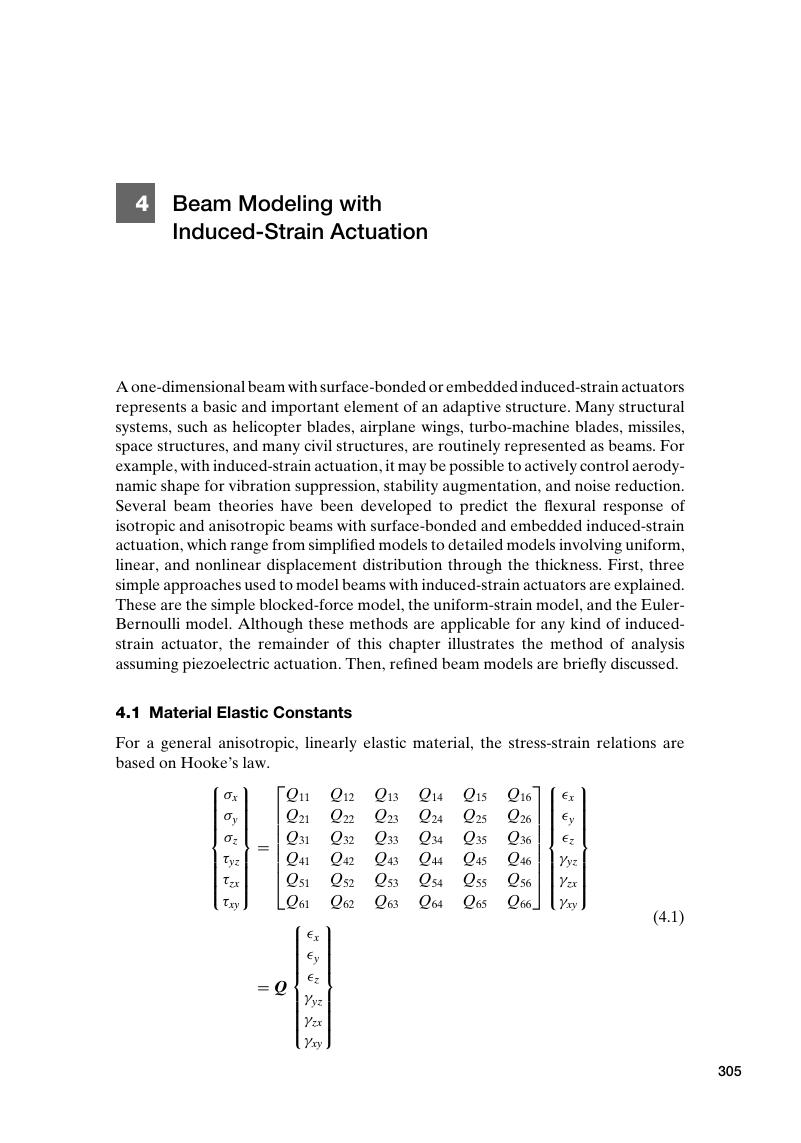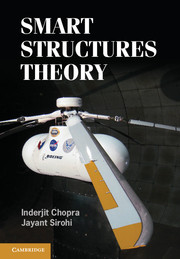Book contents
- Frontmatter
- Contents
- Preface
- 1 Historical Developments and Potential Applications: Smart Materials and Structures
- 2 Piezoelectric Actuators and Sensors
- 3 Shape Memory Alloys (SMAs)
- 4 Beam Modeling with Induced-Strain Actuation
- 5 Plate Modeling with Induced-Strain Actuation
- 6 Magnetostrictives and Electrostrictives
- 7 Electrorheological and Magnetorheological Fluids
- 8 Applications of Active Materials in Integrated Systems
- Index
- References
4 - Beam Modeling with Induced-Strain Actuation
Published online by Cambridge University Press: 18 December 2013
- Frontmatter
- Contents
- Preface
- 1 Historical Developments and Potential Applications: Smart Materials and Structures
- 2 Piezoelectric Actuators and Sensors
- 3 Shape Memory Alloys (SMAs)
- 4 Beam Modeling with Induced-Strain Actuation
- 5 Plate Modeling with Induced-Strain Actuation
- 6 Magnetostrictives and Electrostrictives
- 7 Electrorheological and Magnetorheological Fluids
- 8 Applications of Active Materials in Integrated Systems
- Index
- References
Summary

- Type
- Chapter
- Information
- Smart Structures Theory , pp. 305 - 445Publisher: Cambridge University PressPrint publication year: 2013



